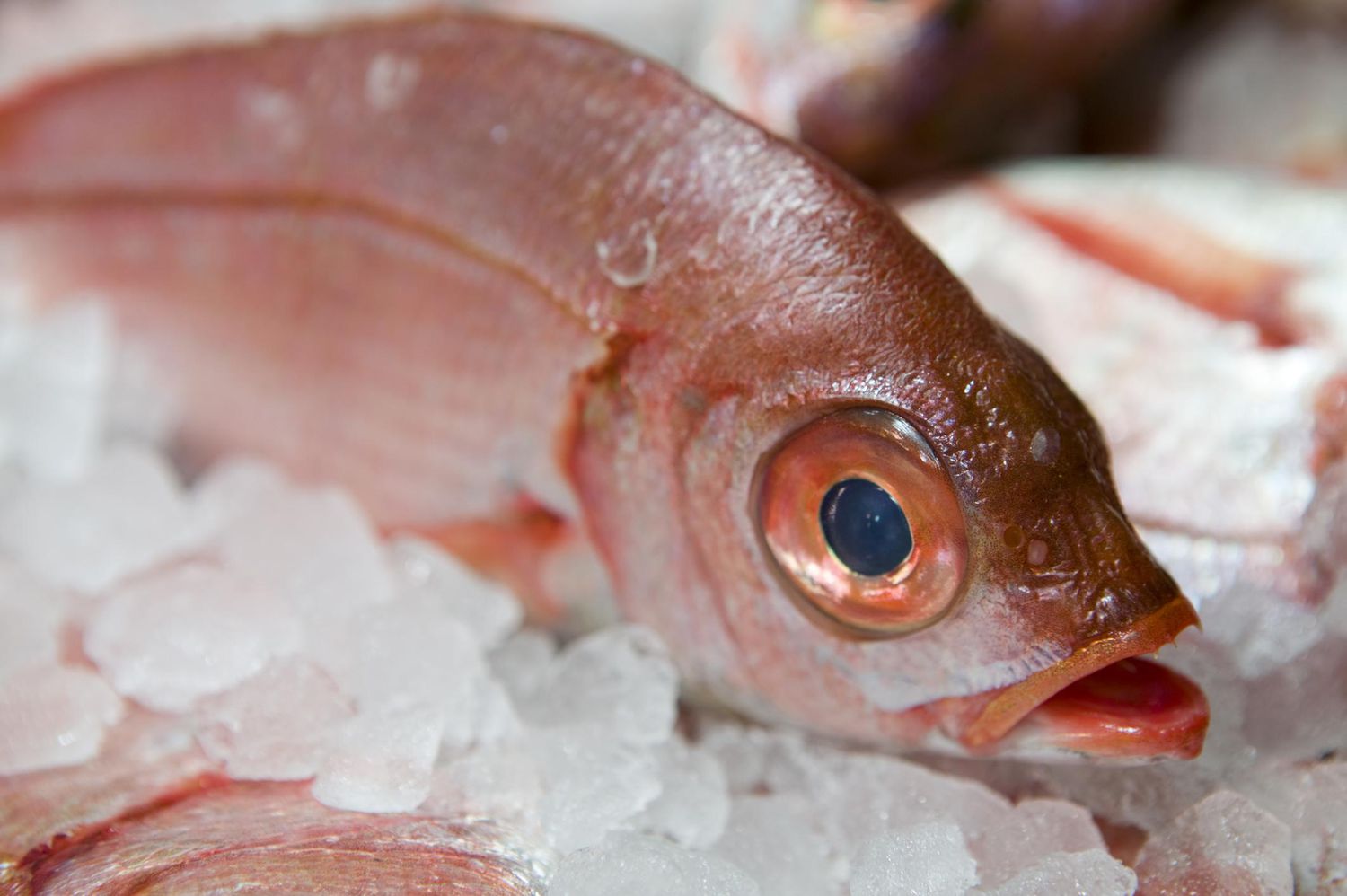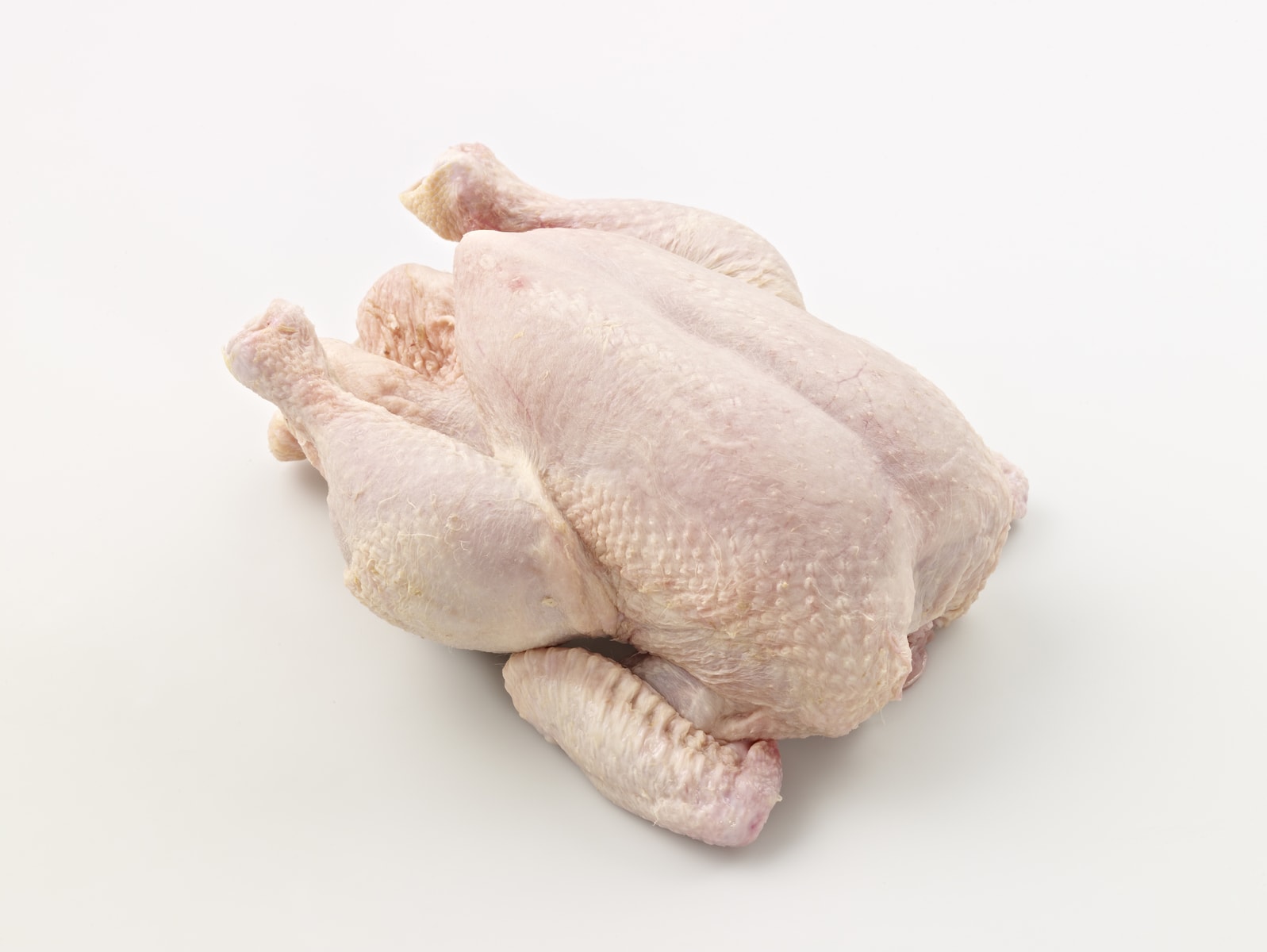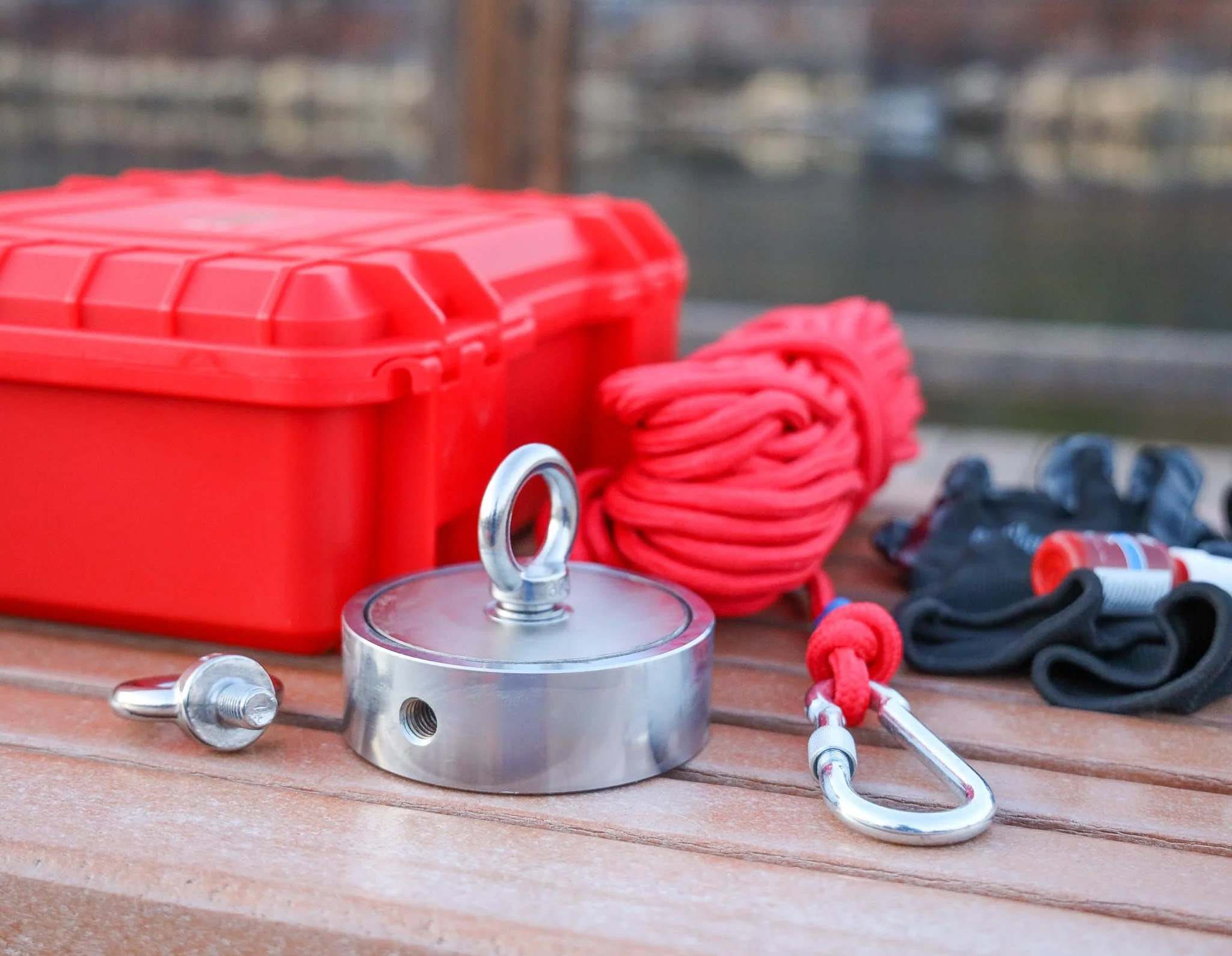

Articles
How To Store Raw Fish
Modified: December 7, 2023
Discover the best techniques for storing raw fish in this informative article. From proper temperature control to packaging tips, learn how to keep your fish fresh and safe for consumption.
(Many of the links in this article redirect to a specific reviewed product. Your purchase of these products through affiliate links helps to generate commission for Storables.com, at no extra cost. Learn more)
Introduction
Properly storing raw fish is crucial to maintaining its freshness and quality. Whether you’ve just caught a fresh fish or bought it from the market, knowing how to store it correctly will ensure that it remains safe to eat and retains its delicious taste. In this article, we’ll explore the importance of proper fish storage and provide you with useful tips on how to store raw fish to maximize its shelf life.
Raw fish is highly perishable and can spoil quickly if not handled and stored correctly. When fish is left at room temperature for an extended period, bacteria can grow rapidly, leading to foodborne illnesses. It is essential to handle raw fish with care and store it at the appropriate temperature to prevent bacterial growth and maintain its freshness.
By following the correct storage procedures, you can extend the shelf life of raw fish, allowing you to enjoy it at your convenience while minimizing waste. Whether you plan to use the fish within a day or freeze it for future use, the right storage methods will ensure that it remains safe and enjoyable to eat.
In the following sections, we will guide you through the steps involved in choosing the right storage container, preparing the fish for storage, storing it in the refrigerator, freezing techniques, alternative storage methods, and tips for maintaining fish freshness. By learning and implementing these practices, you can confidently store raw fish and make the most of your seafood.
Key Takeaways:
- Properly storing raw fish is crucial for maintaining its freshness, safety, and flavor. By following the right storage methods, you can extend the shelf life of raw fish and enjoy delicious seafood dishes at your convenience.
- Choosing the right storage container, preparing the fish for storage, and following proper refrigeration and freezing techniques are essential for maintaining the freshness and quality of raw fish. Prioritize food safety and enjoy the delightful dining experience.
Importance of Proper Fish Storage
Proper fish storage is crucial for several reasons. First and foremost, it helps to maintain the quality and freshness of the fish. Fish is highly perishable and can spoil quickly if not stored correctly. By utilizing the right storage methods, you can extend the fish’s shelf life and ensure that it retains its flavor, texture, and nutritional value.
Another critical aspect of proper fish storage is food safety. Raw fish can harbor bacteria, such as Salmonella and Vibrio, which can cause foodborne illnesses if consumed. These bacteria multiply rapidly at warmer temperatures, so it’s essential to store fish at colder temperatures to inhibit bacterial growth. Storing fish at the correct temperature and following proper handling practices helps to reduce the risk of food poisoning and ensures that the fish is safe to eat.
In addition to maintaining quality and safety, proper fish storage also prevents waste. By storing fish correctly, you can preserve its freshness and prevent it from spoiling prematurely. This allows you to use the fish at your desired time, reducing the chances of it going to waste. Proper fish storage can also save you money by minimizing the need to dispose of spoiled fish or buy replacements.
The last but not least important factor is the preservation of the fish’s flavor. Fish, especially those with delicate flavors, can easily absorb odors and flavors from other foods in the refrigerator. By storing fish properly, you can prevent cross-contamination and preserve its natural taste. This ensures that your fish dishes are flavorful and enjoyable.
Overall, proper fish storage plays a crucial role in maintaining quality, protecting against foodborne illnesses, preventing waste, and preserving the fish’s flavor. By following the recommended storage practices, you can maximize the freshness and taste of your raw fish, making it a delight to prepare and enjoy.
Choosing the Right Storage Container
When it comes to storing raw fish, choosing the right storage container is essential. The container you use should provide a suitable environment that preserves the freshness of the fish and prevents odor transfer to other foods in the refrigerator or freezer.
Here are some factors to consider when selecting a storage container for raw fish:
- Material: It is best to use a container made of non-reactive materials such as glass, stainless steel, or food-grade plastic. These materials do not absorb odors or flavors and are easy to clean.
- Size: The container should be appropriately sized to accommodate the fish without overcrowding. Overcrowding can lead to uneven cooling and increase the risk of spoilage. Additionally, leave some room at the top of the container to allow for expansion when freezing.
- Tight-Fitting Lid: Ensure that the storage container has a tight-fitting lid to prevent air exposure and keep the fish moist. This helps to maintain the quality and freshness of the fish.
- Transparent: Opt for a transparent container, if possible, so you can easily identify the contents without having to open it. This helps to minimize unnecessary exposure to air and temperature fluctuations.
In addition to these considerations, it is important to clean the storage container thoroughly before and after each use. Use hot soapy water to wash the container and rinse it well to remove any residue. This prevents the transfer of bacteria and undesirable flavors.
If you plan to freeze the raw fish, consider using freezer-safe containers or bags designed specifically for freezing. These containers are made to withstand low temperatures and help to prevent freezer burn, which can affect the quality of the fish.
By selecting the right storage container for your raw fish, you can maintain its freshness, prevent odors from permeating other foods, and ensure easy identification in your refrigerator or freezer. Remember, proper storage begins with choosing the right container!
Preparing the Fish for Storage
Before storing raw fish, it is important to properly prepare it to ensure maximum freshness and quality. Here are some steps to follow when preparing fish for storage:
- Clean the Fish: Start by cleaning the fish thoroughly. Rinse it under cold water to remove any blood, scales, or slime. Use a clean cloth or paper towel to pat the fish dry. Removing excess moisture helps prevent bacterial growth.
- Remove the Entrails: If you haven’t already, remove the entrails of the fish. Make a clean incision along the belly and carefully remove the intestines, gills, and other organs. This step is essential for hygiene and helps extend the fish’s shelf life.
- Trim and Fillet (Optional): Depending on your preference, you may choose to trim and fillet the fish before storage. Remove any fins, tail, or bones, and fillet the fish into desired portions. This makes it easier to handle and prepare the fish when you’re ready to cook.
- Seasoning (Optional): If you prefer to season the fish before storage, do so sparingly. Use minimal salt, herbs, or marinades, as excessive seasoning can affect the fish’s texture and quality over time.
- Wrap or Place in a Container: Once the fish is cleaned and prepared, wrap it tightly in plastic wrap or place it in a suitable storage container. Ensure that the packaging is airtight to prevent air exposure and maintain the fish’s moisture.
It’s important to note that it’s best to store fish whole rather than sliced or cut into small pieces. Whole fish stays fresh longer and is more versatile for different cooking methods.
If you’re storing multiple fish, it’s advisable to separate them by wrapping each individually or using separate containers. This prevents cross-contamination and ensures that the flavors of each fish remain distinct.
Remember to label the packaging with the date of storage. This helps you keep track of the fish’s freshness and ensures that you use the oldest fish first when retrieving them from the refrigerator or freezer.
By properly preparing the fish before storage, you can maintain its quality, extend its shelf life, and conveniently use it when desired for delicious seafood meals.
Storing the Fish in the Refrigerator
The refrigerator is an ideal place to store raw fish for a short period, typically up to two days. However, it is essential to follow proper storage practices to maintain its freshness and prevent any potential bacterial growth. Here’s how to store raw fish in the refrigerator:
- Temperature: Set your refrigerator temperature to 32-39°F (0-4°C) to keep the fish cold and inhibit bacterial growth. It is crucial to maintain a consistent and sufficiently low temperature to ensure food safety.
- Storage Container: Place the wrapped or packaged fish in a shallow dish or on a tray to catch any liquids that may be released. This prevents any potential cross-contamination with other foods in the refrigerator.
- Location: Store the fish in the coldest part of the refrigerator, usually the bottom shelf. This helps maintain a consistent temperature and prevents any accidental exposure to warmer air when opening and closing the refrigerator door.
- Non-Fish Odor: Keep the fish away from strong-smelling foods in the refrigerator, as fish can easily absorb odors. This prevents any unwanted flavors from transferring to the fish.
- Use First-In, First-Out: If you have multiple batches of fish in the refrigerator, use the oldest ones first to minimize waste and ensure freshness.
It’s important to note that storing fish in the refrigerator is suitable for short-term storage only. If you plan to keep the fish for an extended period, it’s best to freeze it to maintain its quality and prevent spoilage.
Regularly check the fish for any signs of spoilage, such as foul odors or slime. If you notice any discoloration or sliminess, it’s an indication that the fish has spoiled and should be discarded immediately.
By following these guidelines, you can safely store raw fish in the refrigerator and enjoy its freshness and flavor for up to two days.
Store raw fish in the coldest part of the refrigerator, ideally around 32°F (0°C). Place it in a sealed container or wrap it tightly in plastic wrap to prevent cross-contamination and odor transfer. Use it within 1-2 days for optimal freshness.
Read more: How To Store Fish While Fishing
Freezing the Raw Fish
Freezing raw fish is an excellent way to extend its shelf life and preserve its quality for an extended period. When done correctly, freezing can maintain the fish’s freshness and flavor, allowing you to enjoy it at a later time. Here’s how to freeze raw fish:
- Wrap the Fish: Start by wrapping the raw fish tightly in plastic wrap or aluminum foil. Make sure that the packaging is airtight to prevent freezer burn and to maintain the fish’s moisture.
- Double-Bag (Optional): For added protection, you can double-bag the fish by placing it in a sealed freezer bag. This provides an extra layer of insulation and helps prevent any potential exposure to air or odors.
- Label and Date: To keep track of the freezing time and ensure proper rotation, label the package with the type of fish and the date it was frozen. This helps you identify and use the oldest fish first.
- Optimal Freezing Time: Raw fish can be stored in the freezer for up to three months without significant loss of quality. However, for best results, it’s recommended to consume the fish within one to two months of freezing.
- Freezing Location: Place the wrapped fish in the coldest part of the freezer, such as the back or bottom shelf. This ensures that the fish freezes quickly and maintains its quality during storage.
- Thawing the Fish: When you’re ready to use the frozen fish, it’s important to thaw it properly. The safest method is to thaw it in the refrigerator overnight. Avoid thawing fish at room temperature, as this can promote bacterial growth.
It’s important to note that freezing may affect the texture of some types of fish. Softer fish, such as sole or flounder, tend to lose their firmness when frozen. However, they are still safe to eat and can be used in cooked dishes that don’t require a firm texture.
Additionally, avoid refreezing previously frozen fish once it has thawed. This can lead to a loss of quality and increase the risk of bacterial growth.
By following these guidelines, you can properly freeze raw fish, extend its shelf life, and enjoy its freshness and flavor at a convenient time.
Using Alternative Storage Methods
While the refrigerator and freezer are the most common and effective methods of storing raw fish, there are a few alternative storage methods you can explore depending on your needs and available resources. Here are some alternative ways to store raw fish:
- Cooler with Ice: If you don’t have access to a refrigerator, you can use a cooler filled with ice to keep the fish cold. Place the wrapped fish on top of a layer of ice and cover it with more ice. Ensure that the cooler is tightly sealed to maintain the cold temperature. However, this method is best for short-term storage and requires replenishing the ice regularly.
- Pickle or Cure the Fish: Pickling or curing seafood is a traditional method of preservation. It involves immersing the fish in a mixture of salt, sugar, and acid, such as vinegar or citrus juice. The process helps to preserve the fish and enhance its flavor. Pickled or cured fish can be stored in the refrigerator in airtight jars or containers for an extended period.
- Smoking the Fish: Smoking is another method of preserving and adding flavor to fish. The fish is exposed to low heat and flavored smoke, which helps to extend its shelf life. Smoking also enhances the taste and imparts a smoky flavor to the fish. Once smoked, the fish can be stored in the refrigerator or freezer for future use.
- Dehydrating the Fish: Dehydrating fish involves removing the moisture content, which inhibits bacterial growth and extends shelf life. You can use a food dehydrator or an oven set at a low temperature to dry the fish. Once dehydrated, store the fish in airtight containers or vacuum-sealed bags in a cool and dry place.
- Canning: Canning is a popular method of preserving various foods, including fish. This involves sealing the fish in jars or cans and subjecting them to heat to kill any bacteria. Canned fish can be stored at room temperature, making it a convenient option for long-term storage. Follow proper canning techniques to ensure safety.
It’s important to note that these alternative storage methods may require specific equipment, ingredients, or expertise. It’s recommended to follow established recipes and guidelines when using these methods to ensure proper preservation and safety.
While these alternative methods can be effective in preserving raw fish, it’s still essential to prioritize food safety and consider the recommended storage times to maintain the fish’s freshness and quality.
By exploring these alternative storage methods, you can find suitable options based on your preferences and available resources, allowing you to enjoy raw fish for an extended period.
Tips for Maintaining Fish Freshness
Proper handling and storage techniques are crucial for maintaining the freshness of raw fish. Here are some tips to help you maximize the shelf life and quality of your fish:
- Buy Fresh Fish: Start with high-quality, fresh fish. When purchasing fish, look for clear, bright eyes, red gills, and shiny skin. The fish should smell fresh, like the ocean, without any strong, unpleasant odors.
- Handle with Care: Handle the fish gently to avoid damaging the flesh. Rough handling can accelerate spoilage and affect the texture of the fish. Use clean utensils and work surfaces to prevent cross-contamination.
- Keep it Cold: Raw fish is highly perishable and should be kept cold at all times. Store the fish in the refrigerator or freezer as soon as possible after purchase or catching. Keep it on ice during transportation and avoid leaving it at room temperature for an extended period.
- Use Clean Storage Containers: Ensure that the storage containers used for the fish are clean and sanitized. Avoid containers with existing odors or flavors, as fish can easily absorb them.
- Seal Properly: Whether storing fish in the refrigerator or freezer, ensure that the packaging is airtight to prevent air exposure and maintain moisture. This helps to preserve the fish’s quality and prevent freezer burn.
- Rotate and Use First-In, First-Out: When storing multiple batches of fish, use the oldest ones first. This minimizes waste and ensures that the fish is used while still fresh.
- Thaw Properly: When thawing frozen fish, it’s best to do so in the refrigerator overnight. Avoid thawing fish at room temperature, as this can promote bacterial growth. If you need to thaw fish quickly, you can use the defrost function on your microwave or place it in a sealed bag and submerge it in cold running water.
- Inspect Regularly: Check the fish regularly for any signs of spoilage, such as a slimy texture, off-putting smell, or discoloration. If you notice any such signs, discard the fish immediately.
Following these tips will help you maintain the freshness and quality of your raw fish, ensuring that it remains safe and enjoyable to eat. Fresh fish not only enhances the taste of your dishes but also ensures that you receive the maximum nutritional benefits.
Remember, proper storage and handling practices are key to preserving the freshness of raw fish and allowing you to savor its flavors for a longer period.
Conclusion
Properly storing raw fish is essential to maintain its freshness, quality, and safety. Whether you’re planning to use it immediately or store it for future use, following the right storage methods can significantly impact the taste and texture of the fish. By applying the tips and techniques outlined in this article, you can ensure that your raw fish remains delicious and safe to eat.
From choosing the right storage container to properly preparing the fish for storage, every step plays a crucial role in preserving its freshness. Whether you decide to store the fish in the refrigerator, freezer, or explore alternative methods such as pickling or dehydrating, it’s important to follow the recommended guidelines to achieve optimal results.
Remember to handle the fish with care, keep it cold, and use clean storage containers to prevent bacterial growth and maintain its quality. Properly labeling and organizing your fish can help you keep track of storage times and ensure the oldest fish is used first.
By incorporating these practices into your routine, you can extend the shelf life of your raw fish, minimize waste, and enjoy seafood dishes at your convenience. Whether you’re a fishing enthusiast or a seafood lover, understanding and implementing proper fish storage techniques is essential for a delightful dining experience.
Lastly, always trust your senses when it comes to fish. If it smells off or has a slimy texture, it’s likely spoilt and should be discarded. It’s better to err on the side of caution and prioritize food safety.
So, whether you’re planning a fish feast or looking to savor the freshness of your catch, follow the guidelines in this article to ensure that your raw fish remains safe, flavorful, and enjoyable for you and your loved ones.
Frequently Asked Questions about How To Store Raw Fish
Was this page helpful?
At Storables.com, we guarantee accurate and reliable information. Our content, validated by Expert Board Contributors, is crafted following stringent Editorial Policies. We're committed to providing you with well-researched, expert-backed insights for all your informational needs.















0 thoughts on “How To Store Raw Fish”